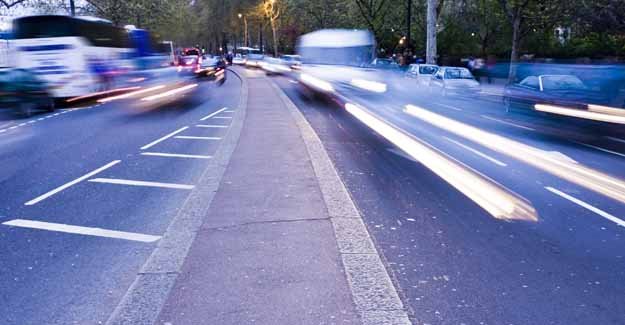- In the last eleven years 337 people have died in UK air accidents.
- In the same period 114 have died in train accidents.
- And 53 people have been killed in UK territorial waters or on UK registered vessels.
For each of these accidents there was provision for an exhaustive inquiry by the Air, Rail or Marine Accident Investigation Branches.
Yet astonishingly, when it comes to accidents on the nation’s roads – where almost 36,781 people died over the same span of time – there is no provision for a similar body to uncover what happened and then make safety recommendations to prevent the same type of thing reoccurring.
Which means many of the deaths might have been avoided.
Today, to coincide with its publication of ‘Transport Safety: Is The Law An Ass?’ by Dr Chris Elliott, the RAC Foundation is calling for a fundamental review into the way road accidents are investigated.
The Foundation’s director Professor Stephen Glaister said, “Historically road accidents are analysed by individual police forces with the emphasis placed on finding out if anyone has broken the law. Identifying the underlying causes of crashes seems to be of secondary importance.”
“We’ve been locking up drivers for a century and yet motorists still die in their thousands on the roads each year. The focus on solely penalising individuals rather than also identifying systemic safety failings is a serious flaw in current transport policy. Road safety should be driven by prevention as well as punishment.”
Professor Glaister continued, “If a lorry smashes into a queue of stationary traffic killing several people attention is concentrated on why the driver failed to spot the obstacle ahead. Whilst this is important, perhaps the bigger questions are; why was the traffic at a standstill in the first place, and how can vehicles be kept moving in the future to avoid repetitions?”
Dr Elliott said, “In 1972 the groundbreaking Robens report revolutionised workplace safety and led to the creation of a coherent and rational legal structure that has saved hundreds of lives. It is time to have a similar root and branch review of the way transport safety policy is implemented and co-ordinated. We have to challenge the global trend towards criminalising accidents and their investigation.”
ENDS
 Transport safety: Is the law an ass? (355.67 KB)
Transport safety: Is the law an ass? (355.67 KB)
 Transport safety: Is the law an ass? – Summary (169.29 KB)
Transport safety: Is the law an ass? – Summary (169.29 KB)
NOTES
The RAC Foundation is a registered charity dedicated to exploring the economic, mobility, safety and environmental issues relating to roads and the use of motor vehicles, and campaigns to secure a fair deal for responsible road users.
Dr Chris Elliott FREng is a system engineer and a barrister. As an engineer, he has worked in aerospace, energy, construction and road and rail transport in the UK and across Europe. As a lawyer he has practiced in transport, environmental and public law and is a health and safety specialist. Chris is also a visiting professor at Imperial College and Bristol University and is a non-executive director of the Office of Rail Regulation.
The casualty figures are taken from Transport Statistics 2008 published by the DfT:
Aviation accidents: 1997-2007 (crew and passengers) fatalities caused by accidents involving UK registered aircraft in UK airspace – total 263. Table 2.9. Page 43
Aviation accidents: 1997-2007 (crew and passengers) fatalities caused by accidents involving UK registered aircraft in foreign airspace – total 35. Table 2.9. Page 43
Aviation accidents: 1997-2007 (crew and passengers) fatalities caused by accidents involving aircraft registered overseas in UK airspace – total 39. Table 2.9. Page 44
Aviation accidents – grand total – 337
Marine accident casualties: 1997-2007 (UK registered merchant vessels of 100gt and over only) – deaths of passengers and crew – total of 53. Table 5.17. Page 99
Train accidents: 1997/98 – 2007 (passengers and railway staff) Doesn’t include accidents through movement of railway vehicles/accidents on railway passengers – total 114. Table 8.8. Page 144
Road accidents: 1997-2007 fatalities – total 36,781. Table 8.1. Page 138


